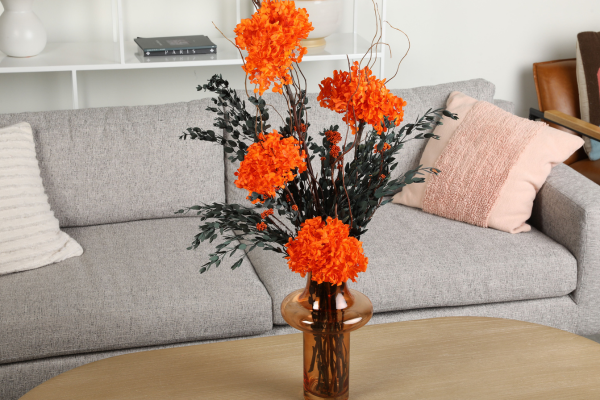In the modern business landscape, brands are no longer defined solely by logos, slogans, or advertising campaigns. Instead, communication has evolved into a multi-sensory experience where the physical environment plays a pivotal role. The way a brand designs its spaces—whether offices, retail stores, or event venues—speaks volumes about its values, culture, and commitment to its audience. This "environmental communication" is subtle yet powerful, influencing perceptions, sparking conversations, and building lasting relationships. For brands like Fleur Reverie, which specializes in biophilic preserved floral decor, the environment itself becomes a canvas for showcasing sustainability, wellness, and harmony. By integrating elements like moss walls or preserved floral arrangements, brands can convey their essence without saying a word. Let's explore how brands communicate through their environment, focusing on offices as a prime example, and why this approach is essential in 2025.
The Power of First Impressions: Setting the Tone
The moment someone steps into a brand's space, the environment begins to communicate. A well-designed office lobby with a focal point like a biophilic moss wall immediately conveys care and innovation. According to a 2023 Gensler study, 78% of employees report higher satisfaction in spaces with thoughtful design elements, which translates to stronger brand loyalty. For Fleur Reverie, incorporating preserved floral art in an office setting isn't just decorative—it's a statement of sustainability and wellness. The moss wall, with its natural texture and air-purifying properties, signals that the brand values health and the environment, creating an immediate positive impression. In contrast, a sterile, uninspired space might communicate neglect or lack of creativity, leading to negative perceptions. Brands that prioritize environmental communication ensure their first impression aligns with their core message, fostering trust from the outset.
Sparking Conversations: The Interactive Element
Environments that communicate effectively don't just impress—they engage. Focal decor, such as a striking preserved floral arrangement, can spark conversations and deepen connections. Imagine walking into an office and being drawn to a custom moss wall from Fleur Reverie's Workspace Design collection. Guests might ask, "What's the story behind this?" prompting discussions about biophilic design's benefits, like reducing noise by 20–30% (University of Sydney, 2023) or stress by 37% (University of Exeter, 2023). The Human Spaces Report (2023) notes that biophilic elements encourage 25% more social interactions in workplaces, turning passive visitors into active participants. For brands, this interactive layer transforms the space into a storytelling tool, where the decor itself initiates dialogue about values like sustainability. Fleur Reverie's designs, with their natural, enduring appeal, facilitate these conversations, making the brand memorable and relatable.
Embodying Brand Culture: Beyond Words
A brand's environment is a living embodiment of its culture. In offices, focal decor like preserved floral accents can reflect values such as innovation, wellness, and sustainability. Marymount University's research (2024) shows that aligned decor boosts employee mood by 20%, embedding culture into the physical space. For example, a preserved floral centerpiece in a conference room signals a commitment to harmony and creativity, aligning with Fleur Reverie's tagline, "Your space shapes your energy." This non-verbal communication is more convincing than any mission statement because it's experiential—employees and clients feel the culture rather than just hearing about it. Brands that use environment to communicate create authentic experiences that resonate on an emotional level, fostering loyalty and advocacy.
The Role of Biophilic Design in Modern Communication
Biophilic design takes environmental communication to the next level by incorporating natural elements that promote well-being. Preserved flowers and moss walls, as seen in Fleur Reverie's collections, communicate a brand's dedication to health and sustainability. The WELL Building Institute (2024) reports that biophilic elements can improve cognitive function by 15%, making them a powerful tool for brands to show they care about people. In commercial spaces, this design choice conveys a forward-thinking culture, attracting talent and clients who value wellness. Fleur Reverie's Shop by Mood collection, with its preserved arrangements, exemplifies how brands can use biophilic decor to communicate subtly yet effectively, creating spaces that inspire and heal.
Case Studies: Brands Leading the Way
Several brands have mastered environmental communication. Google’s offices, with biophilic elements like living walls, communicate innovation and employee care, resulting in higher retention rates. Similarly, Etsy incorporates natural decor to reflect creativity and sustainability, boosting brand perception. Fleur Reverie follows this path, with our preserved floral art in Austin offices promoting harmony and reducing burnout. These examples show that when brands communicate through their environment, they create lasting impact, turning spaces into extensions of their identity.
Challenges and Solutions in Environmental Communication
Implementing effective environmental communication isn't without challenges. Budget constraints or space limitations can hinder efforts, but solutions like affordable preserved floral options from Fleur Reverie make it accessible. The key is intentionality—choosing decor that aligns with brand values to avoid mixed messages. For small businesses or startups in Austin, starting with a focal point like a moss wall can communicate professionalism and care without overwhelming costs. Overcoming these challenges ensures the environment reinforces the brand's message, building stronger connections.
The Future of Brand Communication
As we look to 2025 and beyond, environmental communication will become even more critical. With remote work blurring lines between home and office, brands must create spaces that communicate consistently across physical and digital realms. Biophilic design, with its health benefits (reducing stress by 37%, University of Exeter, 2023), will lead this evolution, helping brands stand out in a crowded market. Fleur Reverie is committed to this future, offering preserved floral art that communicates sustainability and wellness effortlessly.
In conclusion, brands communicate through their environment by impressing, engaging, and embodying their essence. It's a convincing way to showcase values, as the space itself becomes the message. For Fleur Reverie, our designs do just that—promoting calm, focus, and harmony. Ready to let your space speak? Explore our collections today.









